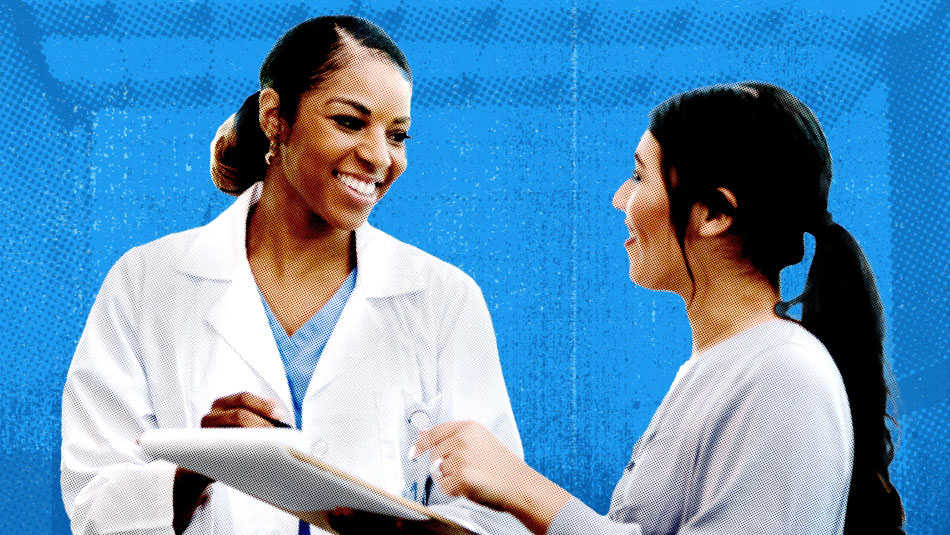
How Twitter Drives Connection in Healthcare, on the Consumer and Provider Sides
This article was written by Twitter in consultation with Muse.
There is no doubt that we, as a society, are in transition. Many trends that were percolating before the pandemic—remote work, housing boom and streaming content expansion, to name a few—were accelerated by the pandemic and have now changed our lives completely. Social platforms, such as Twitter, have been at the center of all these changes for a very simple yet compelling reason: Social is where we connect. And what we learned during the lockdowns and thereafter is that connection is critical.
So, what does connection mean to healthcare?
For healthcare marketers, connection has often meant reaching audiences through mass vehicles like TV. Getting messaging out at an unparalleled scale centering on big television events and series has been a mainstay in marketers' plans. So, how does the industry adapt to lower ratings, smaller audiences and a fundamental shift in how we consume content? The answer: Tapping into platforms like Twitter that offer a third pillar connecting audiences to relevant moments. As advertisers, we know the importance of key tentpole moments and, on Twitter, brands have the unique opportunity to leverage these events to connect with their audiences while they are engaging with the content. That said, there is also a massive potential for brands to stay connected with their audiences through everyday cultural moments across topics and communities they care about. Presence in both instances is crucial to capture consumer interest. Marketers are coming to Twitter to better align with these events in a way that reflects how people are consuming content.
For healthcare consumers, connection is about shared experiences—whether that be personal, such as a treatment journey, or cultural, by connecting through key moments and movements such as Health Awareness days and BLM. Consumers want to share all these experiences with others who may be struggling, celebrating, or anything in between. And most importantly, people want to connect with brands. Cultural relevance is a huge driver of purchase decisions for consumers. In fact, in a recent Twitter and MAGNA study, "The Impact of Culture," we see cultural relevance is a top three product attribute considered along with price/quality and overall brand reputation and ratings. Consumers want brands to lean into the things they care about, and platforms like Twitter make this possible.
And what about healthcare professionals (HCPs)?
The changes for consumers are obvious, but the impact for HCPs is also quite groundbreaking. Similar to consumers, many healthcare trends were already starting before Covid-19: telemedicine, marketing dollars moving to digital, etc. So, as we advance through the pandemic, how do HCPs connect?
One of the mainstays for HCP connection to information, each other, brands, and more, was medical conferences. This model was completely disrupted by Covid-19, creating a void for marketers who had centered much of their strategy around these events. However, what came next was a true evolution: Conferences like ANA and ASCO went virtual and transitioned from a three- to four-day event to an evergreen conversation, where more than 60 percent of the conference dialogue was happening outside conference windows with hashtags like #ASCO22 and #ANA22. HCPs used the conference hashtag to connect with their peers and share information, opening up the opportunity for marketers to leverage a year-round strategy that is just as targeted as their traditional in-person conference campaigns.
In addition, as more dollars move to digital, there is a greater opportunity to connect with HCPs beyond their white coats. While HCPs come to Twitter to share information, research and talk to peers, they are also consuming content related to their favorite topics like sports, entertainment, movies and so much more. They have a range of interests beyond healthcare, and they come to Twitter to feed their passions and connect with communities across global topics. There is a huge opportunity for marketers to connect with HCPs in non-traditional ways, while still doing so on a platform that is considered professionally endemic to this audience.
So what does this mean for marketers?
As marketers evolve and adapt their strategies, it's essential they consider folding social media into their toolbox. These platforms provide a unique opportunity for meaningful engagement, open conversations about shared experiences, and the ability to reach consumers and HCPs where they are. This time of transition will challenge old assumptions, push new thinking, and ultimately inspire innovation. Both the direct-to-consumer and HCP sides of the business will look for new ways to drive their brand metrics forward. Throughout it all, one thing will remain the same: Connection will be critical to drive effective and successful marketing.














